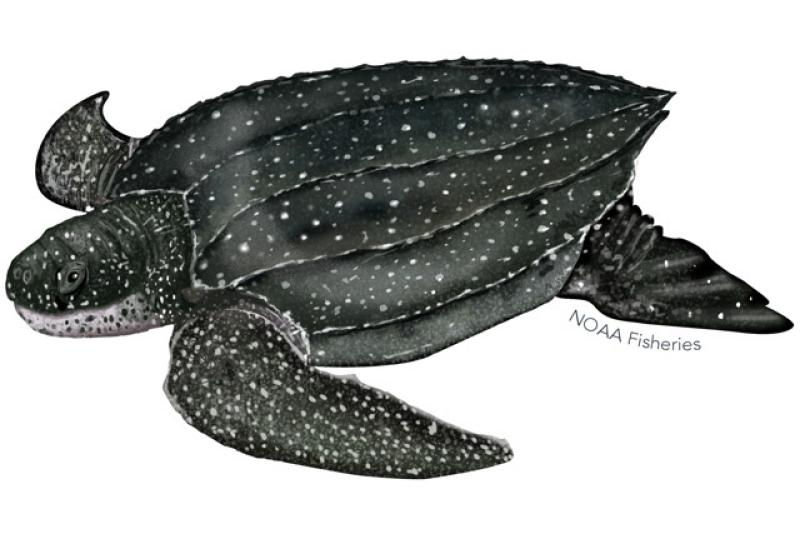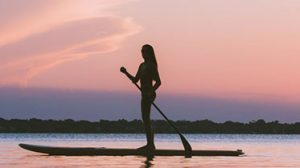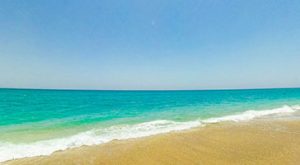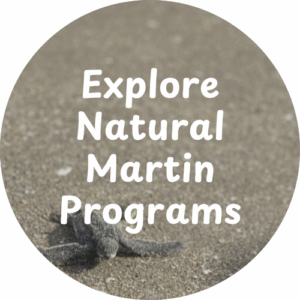
Meet Martin County's Most Iconic Coastal Visitor
Each year, from March through October, Martin County’s beaches become vital nesting grounds for some of the ocean’s most extraordinary creatures—sea turtles.
These remarkable creatures return to our shores under the cover of night to lay their eggs, continuing a cycle that has existed for millions of years. With three species regularly nesting along our coastline—the loggerhead, green, and leatherback—Martin County plays a vital role in global sea turtle conservation.
Whether you’re a curious visitor or a passionate local, keep reading to learn more about these incredible animals and discover simple ways you can help protect them and their coastal habitat.

Sea Turtle Education and Experiences
From informative nature centers to expert-led programs, Martin County offers several ways to deepen your understanding of sea turtles and their conservation. Whether you’re joining a guided night walk during nesting season, witnessing a nest excavation, or exploring exhibits at a local nature center, these educational opportunities help foster a greater appreciation for the species—and how we can protect them.
Meet the Locals!
These 3 species return annually to nest on Martin County’s beaches.
LOGGERHEAD SEA TURTLES
The most common nester in Florida, loggerheads are named for their large, powerful heads and strong jaws, which help them crush hard-shelled prey like crabs and mollusks. While they can weigh up to 400 pounds, they are the smallest of the 3 species that are found to nest here. The Treasure Coast is one of the world’s most important nesting grounds for loggerhead turtles, with thousands of nests recorded each year.

GREEN SEA TURTLES
Named for the greenish color of their body fat, green turtles are gentle herbivores that feed mainly on seagrass and algae. They are slightly larger than loggerheads, weighing up to 450 pounds. They are the second most common species to nest on Martin County’s beaches, and typically nest towards the end of the season.

LEATHERBACK SEA TURTLE
The largest of all sea turtles, leatherbacks can grow over six feet long and weigh up to 2,000 pounds. Unlike other sea turtles, they have a soft, leathery shell instead of a hard one, allowing them to dive to extreme depths of over 3,000 feet. These deep-diving giants often nest earlier in the season and primarily eat jellyfish.


When is nesting season?
Sea turtle nesting season runs from March 1 – October 31!
However, sea turtles often nest outside of this range, so it is important to always remember turtle-safe practices.

Dark, Flat, and Clean
By remembering this simple phrase, you can help protect sea turtles!
Dark
Artificial light can disorient sea turtles, especially hatchlings trying to find their way to the ocean. Turn off beachfront lights at night, close blinds or curtains in ocean-facing rooms, and avoid using flashlights or flash photography on the beach during nesting season.
Flat
Obstacles on the beach, like deep holes and sandcastles, can block or trap sea turtles as they nest or hatch. Before leaving the beach, fill in any holes and knock down sand structures to help keep the shoreline as smooth and flat as possible.
Clean
Litter and leftover beach gear can harm sea turtles and other wildlife. Always remove your trash, take all belongings with you, and avoid leaving chairs, tents, or toys out overnight. Even small items like plastic wrappers can pose a serious threat.

Remember...
If you see nesting sea turtles or hatchlings on the beach, do not approach or disturb them. Report stranded or dead sea turtles, hatchlings in danger, or someone disturbing a turtle or its nest. Call the Florida Fish and Wildlife Conservation Commission (FWC) at 1-888-404-3922 or *FWC from your cell phone.









